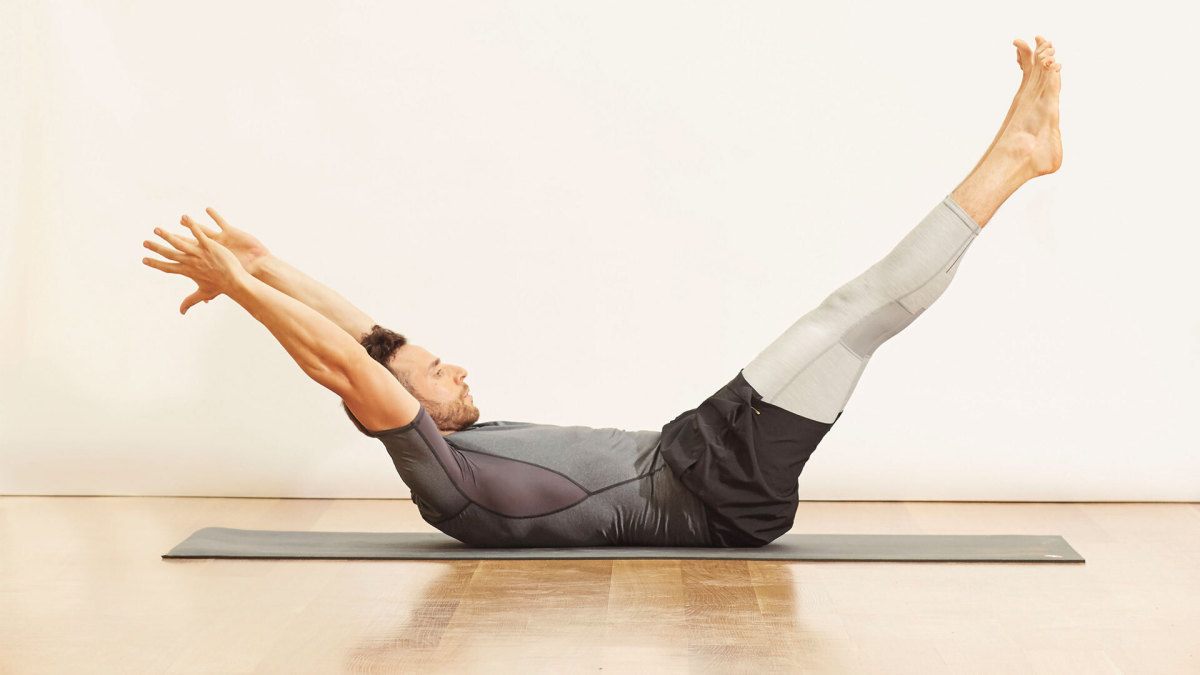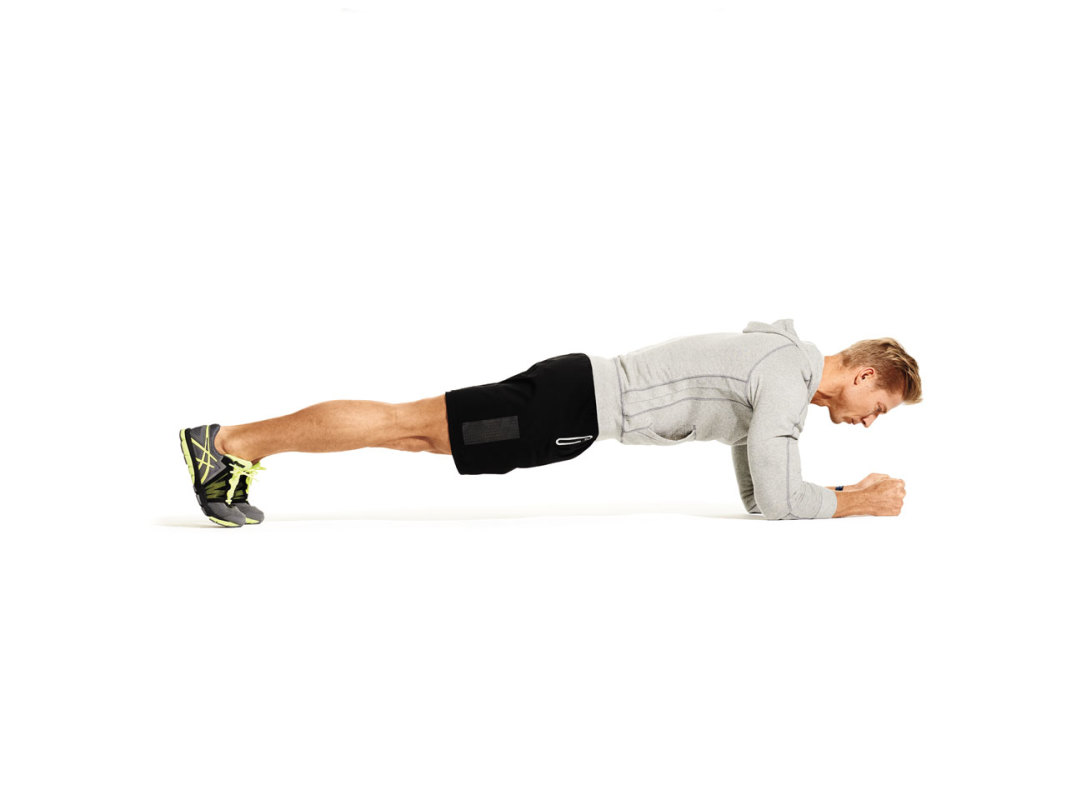Health
A Wake-Up Call for Women

March 14, 2024âActress Olivia Munnâs candid disclosures on Instagram about her aggressive breast cancer â a surprise discovery after a âcleanâ mammogram and negative genetic tests â were a poignant mix of details about her cancer journey and a cautionary tale for women. Â
Munn earlier this week revealed her 10-month battle with breast cancer, which resulted in four surgeries and a double mastectomy, and used the social media site as a way of encouraging women to educate themselves about the disease and the importance of appropriate screening tests.
Munnâs experience reveals some truths that women may not know: Most women who get breast cancer donât have a genetic predisposition. Mammograms donât detect all cancers. An individual risk assessment — which Munnâs OB/GYN doctor recommended — can point to the need for additional testing to find tumors mammograms have missed.
Munn, 43, known for her work on The Daily Show with Jon Stewart, as economist Sloan Sabbith on the HBO political drama The Newsroom, and movies including Magic Mike, wrote in detail on Instagram about finding out she had an aggressive form of cancer known as luminal B despite having a normal mammogram and testing negative on a genetic test that she said checked for 90 different cancer genes.Â
Her doctor did an individual risk assessment, finding Munnâs lifetime risk was 37%, considered very high, and referred her to more extensive testing, which detected cancer in both breasts.
Munn said in a series of Instagram posts that she initially kept her diagnosis private, explaining, âI needed to catch my breath and get through some of the hardest parts before sharing.â She lauds her OB/GYN, Thais Aliabadi, MD, who decided to calculate the risk score. âThe fact that she did saved my life,â Munn wrote.Â
Munnâs fighting spirit and positive attitude are apparent. âIâm lucky,â she posted. âWe caught it with enough time that I had options.â She praised the efforts of John Mulaney, her partner with whom she shares a 2-year-old son. He researched treatments and medication and posted pictures bedside of their son.
Munn thanked her doctors and other staff at Cedars-Sinai Medical Center in Los Angeles and Providence Saint Johnâs Health Center in Santa Monica, including her surgical oncologist, Armando Giuliano, MD, her reconstructive surgeon, Jay Orringer, MD, her oncologist, Monica Mita, MD, and Aliabadi.
A spokeswoman for Munn said the actress is not doing interviews at this time. Spokespersons at Cedars-Sinai declined to comment on Munnâs case.
Genetics and Breast CancerÂ
âMost people who get breast cancer donât have an inherited genetic mutation,â said Nathalie Johnson, MD, medical director of the Legacy Health Systems Cancer Institute and the Legacy Breast Health Centers in Portland, OR, who was not involved in Munnâs treatment.Â
âOnly 5 to 10% of people who get breast cancer have a gene that tests positive,â agreed Joanne Mortimer, MD, director of Womenâs Cancers Program and a medical oncologist at City of Hope in Duarte, CA. Mortimer was also not involved in Munnâs care and spoke generally about breast cancer treatment in cases similar to Munnâs.
Cancer Subtypes
Luminal breast cancers are those originating inthe luminal or inner lining of the mammary ducts. Both luminal A and luminal B need estrogen to grow, Johnson said. Luminal A has a better prognosis and is easier to treat. Luminal B has a worse prognosis, she said, and itâs sometimes dubbed B for âbad.âÂ
Luminal B ârequires chemotherapy and if it recurs; itâs just harder. It stops responding to endocrine therapy or estrogen-blocking drugs and so we have to use other therapies.âÂ
Genomic testing helps doctors decide if the luminal tumors are A or B forms, she said. The prognosis for luminal B cancers can still be good, Johnson said.
Beyond Mammograms
âMammograms arenât perfect,â Johnson said. The screening can especially miss cancers in breasts with dense tissue because the cancers donât show up as well on the imaging.Â
Density refers to the amount of fibrous and glandular tissues in the breast compared to fatty tissue. About half of women age 40 and above have dense breasts, according to the CDC. The mammogram report may include information about whether breast density is high or low.Â
If breasts are dense, an ultrasound or breast MRI would be good supplementary tests, Johnson said.
Even though mammograms miss some cancers, Johnson urges women to undergo the exams as recommended. The U.S. Preventive Services Task Force, in its draft recommendation, calls for mammograms beginning at age 40 and repeated every other year.
Even if mammogram results show no evidence of cancer, if a woman feels something unusual in her breasts, itâs time to return to the doctor and ask about further testing, Johnson said.
An MRI is often done in women as young as Munn, Mortimer said, if they are known to have dense breasts or a family history, both known to raise breast cancer risk. âIn someone with a family history, we alternate MRIs with mammograms to increase the chances of detection,â she said.
Individual Assessments
In her Instagram posts, Munn praises her OB/GYN for suggesting an individual risk assessment. âDr. [Thais] Aliabadi looked at factors like my age, familial breast cancer history, and the fact that I had my first child after the age of 30,â Munn wrote on Instagram. âShe discovered my lifetime risk was at 37%.âÂ
That score prompted the doctor to refer Munn for an MRI and then an ultrasound and biopsy. âThe biopsy showed I had Luminal B cancer in both breasts,â Munn wrote. âLuminal B is an aggressive, fast-moving cancer.â Thirty days later, Munn had a double mastectomy.
One such risk assessment is on the National Cancer Institute site. It takes into account a history of breast cancer, previous radiation to the chest, genetic mutations, age, race, ethnicity, history of a breast biopsy with a benign diagnosis, age at first menstrual period, age when first child was born (over 30 raises risk), and first-degree relatives (your parents, sibling, or child) with breast cancer.
From that, it predicts a 5-year risk and a lifetime risk of developing breast cancer, comparing the patientâs risk with the average risk of the population.
For instance, a 43-year-old White woman with no history of breast cancer or previous radiation, no genetic mutations, no previous breast biopsies, first period at age 12, 30 or older at first childbirth, and no first-degree relatives with breast cancer has a 13.2% lifetime risk of breast cancer, slightly above the average risk of 12.1%.
Treatment Options
Besides the type of tumor detected, factors such as lymph node involvement drive treatment decisions, Johnson and Mortimer said.Â
For a young woman with luminal B breast cancer, the usual regimen would be surgery, chemotherapy, and estrogen-blocking therapy. âThe luminal B prognosis is still good if you do the chemo as well as the endocrine therapy.â Johnson said.
Models can assess survival rates if the treatment includes chemotherapy or does not, Johnson said, helping women to make their own decisions.
Mortimer called Munnâs OB/GYN âpretty amazingâ to suggest the risk calculator and take action, finding the tumor much earlier than the next scheduled mammogram would have.
Health
Homecoming: An Evolutionary Approach for Healing Depression and Preventing Suicide

Part 2
In Part 1, I shared my challenges with depression, the fact that the suicide rate for males is so much higher than it is for females, and how these realties have impacted men and their families. Here we will look more deeply into the underlying causes and potential solutions to this world-wide problem.
The Most Underappreciated Fact About Men and Why Males Are the Risk-Takers
Dr. Roy Baumeister is one of the world’s leading social scientists. Understanding his work can better help us understand a lot about why men are the way they are and specifically why men are the risk-taking gender.
Baumeister is the author of more than thirty books and four hundred scientific articles. In his groundbreaking book, Is There Anything Good About Men? How Cultures Flourish By Exploiting Men, he says,
“If evolutionary theory is right about anything, it’s right about reproduction. Nature will most favor traits that lead to success at reproducing. But for thousands of years, men and women have faced vastly different odds and problems in reproducing. On this basic task, women faced good odds of success, whereas men were born to face looming failure.”
Given that all humans are mammals, there is a basic biological fact of life. It is the female who carries the baby in her womb and will always be 100% sure that any offspring carry her genes. Males can never be 100% certain, hence the truism, “mother’s baby, father’s maybe.” Further, through evolutionary history more females than males reproduced.
Dr. Baumeister tells us that
“Of all the people who ever reached adulthood, maybe 80% of the women but only 40% of the men reproduced. Or perhaps the numbers 60% versus 30%. But one way or another, a woman’s odds of having a line of descendants down to the present were double those of males.”
Baumeister goes on to say,
“That’s a stunning difference. Of all humans ever born, most women became mothers, but most men did not become fathers.”
The result is that throughout human history men became the risk-takers, competing with other men to be chosen by a woman to mate with him. Some successful males (think Genghis Kahn) fathered hundreds of children. Some men stuck out completely.
Women’s motto became: “Life has handed you a good thing; don’t blow it. Play it safe.”
Men’s motto was the opposite: “The odds are against you. Better take your chances.”
Says Baumeister,
“That’s why we are descended from playing-it-safe women and risk-taking men.”
Help-Seeking vs. Risk-Taking, The Empathy Gap, and Implications for Male Suicide
My father didn’t seek help with his depression until he was forced to do so and the help available at the time was inadequate. This is still true for many men today.
“Perhaps it is not surprising that, if there are large gender differences in risk-taking and protective behavior,”
says Dr. Martin Seager who we met in Part 1,
“there will also be correspondingly large gender differences in help-seeking. An individual or group that is more likely to take risks to protect others is also by definition less likely to seek help or self-protection.”
As my father found, he was not only driven to take risks to work in a challenging profession in order to take care of his family, but this indication was supported and encouraged by the society at large.
“The evidence also indicates that society is correspondingly calibrated to expect this difference and is consequently less empathic towards male death and injury,”
says Seager.
“If this is the case, then it must follow logically that men will be on average more driven than females to take their own lives because of:
a. A greater instinct to ignore personal safety and confront danger
b. A greater instinct to protect others (and greater shame at failing to do so)
c. A lower sense of entitlement to receive help or protection from others.”
Towards a More Scientific and Effective Approach to Reducing Male Suicide
Dr. Seager’s approach offers importance guidance for clinicians as well for men and their families.
By simply allowing archetypal gender differences to be researched, understood, and honored, gender-specific solutions to male suicide can indeed be found. Here are some important points:
- Carl Jung talked of archetypal patterns evolved within the human species and shared within a “collective unconscious.”
- Jung’s thinking was clearly influenced by ancient Chinese conception of “Yin” and “Yang” in which femininity (one aspect of “Yin”) is seen along with masculinity (one aspect of “Yang”) as complementary system of opposites within the natural universe.
- Dr. Seager proposes the following simple and practical instinctual, evolutionary-based, male archetypes:
- Fighting and winning.
- Providing and protecting.
- Maintaining mastery and self-control.
- These archetypes contribute to a sense of masculine identity, honor and strength. To the extent that a man feels these elements are missing, he will feel the opposite of masculine shame and failure.
My own experiences and research has convinced me that men’s inherent proclivity to maintain emotional self-control helped men be successful hunters during the millions of years humans were hunter-gatherers. Men needed to fight potential threats from other men in order to protect our families. Men needed to take-risks in order to compete with other men in our own tribes so that we would be chosen by women. These evolutionary-based instincts are built-in and though they don’t control our behavior, we still make individual choices, they cannot be ignored.
Calling masculinity “toxic” or blaming the “patriarchy” just serves to divide and alienate us. We create more conflict between left and right, males and females, Republicans and Democrats, Us and Them. We need more bridges not more walls.
I met the internationally acclaimed scholar, futurist, and activist, Riane Eisler shortly after her book, The Chalice & the Blade was published in 1987. We have been friends and colleagues ever since. She said,
“Underlying the great surface diversity of human culture are two basic models of society. The first, which I call the dominator model, is what is popularly termed either patriarchy or matriarchy—the ranking of one half of humanity over the other. The second, in which social relations may best be described as the partnership model. In this model—beginning with the most fundamental difference in our species, between male and female—diversity is not equated with either inferiority or superiority.”
Why an Archetypal Approach to Male Depression and Suicide Works Better
For some clinicians, men’s innate desire to fight and win, to protect women and children, and to control our emotions, are seen as “toxic” or “harmful.” They try and encourage men to change and express themselves in different ways. Dr. Seager’s approach is different:
“If we assume that men on average are more likely than women to be driven to ‘fight, protect’ and ‘retain mastery/self-control,’ then it is clear that trying to encourage men collectively to ‘open up, be vulnerable’ and ‘seek help’ potentially violates deep-rooted masculine instincts. Such an approach may even increase a sense of masculine shame and failure.”
Dr. Seager concludes that we have a choice between two divergent approaches:
- Socially challenging and reconstructing masculine behavior and masculinity itself as a negative stereotype through educational methods with the aim of teaching males to seek help and share emotions more openly (i.e. change masculinity).
- Changing the social attitudes and responses of society towards men and boys to create more empathy for masculinity as a positive part of the human spectrum, while providing male-friendly services for men and boys that both honors the male archetype and offer new and better ways of expressing it (i.e. change society).
In advocating for the second of the two approaches, Dr. Seager says,
“I am saddened that our profession seems to be no better than the rest of society in being blind to the fact that men and boys also have needs and problems arising from their gender. Raising this subject always incurs unreasoned resistance and even at times hostility. This in itself shows the need to keep promoting the issue.”
My father was fortunate to have survived a health-care system based on the first approach that never worked for him, he finally found his way to one that accepted his inherent drive to take risks in support of his family. I wrote about his journey in my book, My Distant Dad: Healing the Family Father Wound and an article, “My Father’s Stay at God’s Hotel: A Slow-Medicine Approach to Healing Mental Illness.”
The Moonshot For Mankind: Male-Positive Programs For Men and Their Families
I launched MenAlive in following the birth of our first son, Jemal, on November 21, 1969 and our daughter Angela, on March 22, 1972. Fifty years ago, there were very few programs that focused on men’s mental, emotional, and relational health. Now there are many. Three years ago I invited a number of colleagues who I knew were offering new and effective approaches for helping men to join me in creating a central hub for the thousands of organizations that are now available.
Come visit us at our website, MoonshotForMankind.org. Here are a few of the organizations that have joined our movement:
ManTherapy.org: Man Therapy is an evidence-based, decades-long, multidisciplinary effort to break though stigma, improve help-seeking behavior and reduce male suicide. And they’ve got the stats to back it up. Learn more here.
MenLiving.org: MenLiving delivers programs and experiences to help create a world of healthy, intentional, connected men who can heal and thrive. Learn more here.
Men and Boys Compassion Initiative (MBCI) is an international movement to help men and boys cultivate their compassionate selves. This also requires the cultivation of courage and wisdom to heal the male crisis of disconnection.
You can learn more about the work of Martin Seager at the Centre For Male Psychology.
We need more programs for men that are evolutionary-archetypally informed. You can learn more at MenAlive.com and MoonshotForMankind.org. If you like articles like these, I invite you to become a subscriber.
Health
Closing of Rural Hospitals Leaves Towns With Unhealthy Real Estate



By Taylor Sisk
JELLICO, Tenn. — In March 2021, this town of about 2,000 residents in the hills of east Tennessee lost its hospital, a 54-bed acute care facility. Campbell County, where Jellico is located, ranks 90th of Tennessee’s 95 counties in health outcomes and has a poverty rate almost double the national average, so losing its health care cornerstone sent ripple effects through the region.
“Oh, my word,” said Tawnya Brock, a health care quality manager and a Jellico resident. “That hospital was not only the health care lifeline to this community. Economically and socially, it was the center of the community.”
Since 2010, 149 rural hospitals in the United States have either closed or stopped providing in-patient care, according to the Cecil G. Sheps Center for Health Services Research at the University of North Carolina. Tennessee has recorded the second-most closures of any state, with 15, and the most closures per capita. Texas has the highest number of rural hospital closures, with 25.
Each time a hospital closes there are health care and economic ripples across a community. When Jellico Medical Center closed, some 300 jobs went with it. Restaurants and other small businesses in Jellico also have gone under, said Brock, who is a member of the Rural Health Association of Tennessee’s legislative committee. And the town must contend with the empty husk of a hospital.
Dozens of small communities are grappling with what to do with hospitals that have closed. Sheps Center researchers have found that while a closure negatively affects the local economy, those effects can be softened if the building is converted to another type of health care facility.
In Jellico, the town owns the building that housed the medical center, and Mayor Sandy Terry said it is in decent condition. But the last operator, Indiana-based Boa Vida Healthcare, holds the license to operate a medical facility there and has yet to announce its plans for the building, leaving Jellico in limbo. Terry said local officials are talking with health care providers that have expressed interest in reopening the hospital. That’s their preferred option. Jellico does not have a Plan B.
“We’re just in hopes that maybe someone will take it over,” Terry said. Meanwhile, the nearest emergency rooms are a half-hour drive away in LaFollette, Tennessee, and across the state line in Corbin, Kentucky.
An hour and a half away in Fentress County, the building that once housed Jamestown Regional Medical Center has been empty since June 2019, when Florida-based Rennova Health — which also previously operated Jellico Medical Center — locked it up.
County Executive Jimmy Johnson said Rennova’s exit from Jamestown was so abrupt that “the beds were all made up perfectly” and IV stands and wheelchairs sat in the halls. About 150 jobs evaporated when the center closed.
Rennova still owed Fentress County $207,000 in taxes, Johnson said, and in April the property was put up for auction. A local business owner purchased it for $220,000. But Rennova was granted a year to reacquire the building for what it owed in back taxes, plus interest, and did so within a few days.
Abandoned hospital buildings dot the map in central and east Tennessee. But in the western part of the state, two communities found uses for their empty buildings, albeit not in reopening hospitals.
Somerville, about an hour east of Memphis, lost its hospital, Methodist Fayette, in 2015. Its parent company, Methodist Le Bonheur Healthcare, donated the building to the town and threw in $250,000. The building is now a satellite campus for the University of Tennessee-Martin.
The conversion was pushed along by the town leveraging other funding. Bob Turner, Somerville’s city administrator, said both the town and the county matched Methodist’s quarter-million dollars toward the renovation. In its first year in Somerville, the university raised another $125,000. Tennessee’s governor then matched that $875,000 in his state budget.
Somerville is now in the seventh year of a 10-year agreement with the university, which rents the building from the town.
“We have a building, an asset, that’s probably worth $15 million,” Turner said. “It’s a four-year university right here in the heart of Fayette County.”
Mendi Donnelly, Somerville’s community development director, said the county is still in desperate need of a hospital, but “we’re thrilled that we were able to make lemonade out of our lemons.”
Ninety miles to the northeast, in rural Carroll County, Tennessee, another shuttered hospital found new life.
The closing of McKenzie Regional Hospital in 2018 was a blow to the local economy. But Baptist Memorial Health Care, which operates a hospital in nearby Huntingdon, bought the assets — including the building, land, equipment, and ambulance service — and subsequently donated the building to the town of McKenzie.
Cachengo, a technology company, ultimately took over the space. Because of hospitals’ electrical infrastructure, the site was a perfect fit for a business like his, said Ash Young, Cachengo’s chief executive. Young said Cachengo is now looking into repurposing abandoned hospitals across the country.
Jill Holland, McKenzie’s former mayor and a local-government and special-projects coordinator for the Southwest Tennessee Development District, believes the town can become a technology hub.
“It’s opening a lot of doors of opportunity for the youth in the community,” Holland said.
Back in Jamestown, the vacant hospital is “deteriorating,” said Johnson, the county executive. “It could have been used to save lives.” Rennova did not respond to a request for comment.
The University of Tennessee Medical Center opened a freestanding emergency room elsewhere in Jamestown, sparing residents a half-hour drive to the closest ER. Johnson believes the old hospital building could serve the community as housing for those who are homeless or as a facility to treat substance use disorder.
Brock, the health care quality manager, thinks things will get better in Jellico, but the community has had its hopes dashed more than once.
Brock believes a freestanding emergency room could be a viable solution. She urges her community to be responsive to “a new day” in rural health in America, one in which a hospital must focus on its community’s most urgent needs and be realistic about what that hospital can provide.
“Maybe it is just the emergency room, a sustainable emergency room, where you could hold patients for a period of time and then transfer them,” Brock said. “And then you build upon that.”
She added, “There are options out there.”
KFF Health News is a national newsroom that produces in-depth journalism about health issues and is one of the core operating programs at KFF—an independent source of health policy research, polling, and journalism. Learn more about KFF.
Subscribe to KFF Health News’ free Morning Briefing.
—
Previously Published on kffhealthnews.org
***
You Might Also Like These From The Good Men Project
Join The Good Men Project as a Premium Member today.
All Premium Members get to view The Good Men Project with NO ADS. A $50 annual membership gives you an all access pass. You can be a part of every call, group, class and community. A $25 annual membership gives you access to one class, one Social Interest group and our online communities. A $12 annual membership gives you access to our Friday calls with the publisher, our online community.
Register New Account
Need more info? A complete list of benefits is here.
—
Photo credit: unsplash
Health
Noah Lyles' Ab Workout for a Rock-Solid Core

Whether you’re looking for your fastest mile ever, itching to cook your friends on the court in pickup or pickleball, or cooking through a sprint workout on the track like an Olympian, you need a rock-solid abs.
“If you have a straight stick, and you throw its end on the ground, it’ll bounce back up; but if there’s bend in the stick, it might bounce in any direction,” says Team USA’s Noah Lyles, a favorite to win gold in the 100m at the Paris Olympics. “It’s the same thing when you’re running. If you don’t have a tight midline—a stable, well-structured core—when you make contact with the ground, you’re not using all the power you’re producing.”
Few athletes know more about building power and speed than Lyles. To create the explosive stride that’s led him to eight track and field world championship and Olympic medals—including double gold in the 100 and 200 meters at the 2023 world champs—the 27-year-old sprinter spends four days per week in the weight room, doing workouts that focus on building power: Exercises like cleans, hex bar deadlifts, front squats, back squats, and power throws.
To make sure he’s converting his power into speed with each step, Lyles also sweats through a core workout in just about every session, building that springy, power-saving stiffness in his middle that lets him unleash the power he builds through his barbell work and track sessions.
As part of his partnership with CELSIUS energy drinks, Lyles spoke with Men’s Journal to share one of the core routines he uses to help build gold medal abs. There are also some easier alternatives for each exercise for non-Olympians who need to scale down.
Try this workout at the end of your next strength training session, or as a workout on its own. For each move in this six-exercise routine, rest 1 to 2 minutes between sets.
1. GHD Machine Hollow Hold

Westend61/ Getty Images
Why It’s Effective
You may have done hollow holds before on the floor, but Lyles’ version adds an extra challenge: Instead of on the ground, this move is performed on the glute-ham developer bench. A staple in CrossFit gyms, this machine can be used for butt and leg development, as the name suggests, but is also popular for intense, full-range situps and other core moves.
How to Do It
- Get into the GHD with your feet in the foot pad area, your legs straight and your butt sitting off the GHD’s large pad, to start.
- Sit up so your body forms a 90-degree angle. Reach your arms straight up overhead (you can also gentle hold the back of your head).
- Maintaining a flat back, slowly lean back to open your hip angle. Lean back as far as you can—as close to horizontal as possible—hold your body steady by bracing your core.
- Once you’ve found the depth you can hold, maintain the hollow position for 30 seconds.
- Perform 4 x 30-second holds.
Easier Variation: Hollow Body Hold

Justin Steele
The closer your torso is to perpendicular, the easier the move will be. And if you don’t have access to a GHD machine, you can perform hollow holds on the floor.
How to Do It
- Lie on your back with your arms and legs fully extended, squeezing everything tight, to start.
- Press your lower back into the ground and slightly lift your legs and upper back off the floor.
- If you’re a beginner, hold this position. If you’re more advanced, rock forward and back—holding the shape of a banana.
2. Toes to Bar

James Michelfelder
Why It’s Effective
Toes to bar does more than just build a six-pack: Studies have shown this type of move is one of the most effective for strengthening the obliques, even when done without twisting. Lyles does the full toes to bar variation.
How to Do It
- Hang from a pullup bar with straight arms set slightly wider than shoulder-width. Draw your shoulder blades back and down, to start.
- Keeping your feet together and legs straight, engage your core to hinge your hips, raising your legs until your toes touch the bar.
- Control your descent back to the starting position. That’s 1 rep.
- Perform 4 x 7-10 reps.
Easier Variation: Hanging Knee Raise
- Hang from a pullup bar with straight arms set slightly wider than shoulder-width. Draw your shoulder blades back and down, to start.
- Bend your knees and bring your thighs up until they’re parallel with the floor.
- As you advance, move on to a straight-leg raise, where your legs are extended straight from hips.
3. V-Up

Why It’s Effective
For someone as strong as Lyles, this advanced sit-up might seem easy. To keep it challenging, he says, he’s uncompromising on form: “It has to be that V shape in the middle, and you have to be touching your toes,” he says, in order to get the full benefit.
How to Do It
- Lie on your back with your legs straight and arms overhead.
- Without bending your elbows or knees, contract your abdominal muscles, fold your body up by lifting your legs off the floor and stretch your arms toward your toes. Keep your back straight. As you rise, your body will form a “V” shape, and will then close like a venus fly trap.
- Pause, then return to the starting position. Do four sets of 20 repetitions.
Easier Variation: Deconstructed V-Up
If you’re flailing and throwing your torso up and down, split the move in two: Perform the upper body portion of the V-up, doing a situp with a straight back. Then do the lower body portion, raising your legs from the ground while your upper body is flat on the ground.
4. Star Plank

sergio_kumer/ Getty Images
Why It’s Effective
This move, Lyles says, is probably the most important in his core routine because it engages the core and the glutes at the same time. Running requires front and posterior muscles to work together in balance, and this trains just that.
To help fire up your glutes in this move, try getting into the side plank in a different way: Instead of lifting your hips off the floor laterally, do so from a position where your knees are slightly bent, and your feet are a little closer to your waist than they will be in the full side plank position. As you raise your body up, squeeze your butt to press your hips forward and take the bend out of your knees. As you do this, your feet will slide a bit on the ground into position.
How to Do It
- Get into a classic side plank position: Lie on your left side with your forearm on the floor directly under your left shoulder, with your legs and feet stacked. Have a slight bend in your knees.
- Prop yourself up on your elbow, and squeeze your glutes to straighten your legs as you assume the forearm side plank position so that your body forms a straight line from ear to ankles. To make this harder, perform the move with your left arm straight beneath you, balanced on your hand instead of your forearm.
- Straighten your top arm so that your torso forms a “T” shape.
- Without letting this rigid body line slacken and without bending your knee, raise your top leg (right) up away from your bottom leg. Your arms and legs will form an “X” or star shape.
- Hold this position for 15 seconds, then repeat on the other side. Perform 4 x 15-seconds holds.
Easier Variation: Side Plank
Too hard? Skip the star shape. Stop at step 3, and perform the four 15-second holds on each side.
5. Forearm Plank

Beth Bischoff
Why It’s Effective
Don’t just hang out in a plank, Lyles says. Engage your core by drawing your belly button towards your spine. Feel your lats in your back firing. Squeeze your glutes. And grip the floor with your fingers. This, he says, will turn this “easy” move into a challenge.
How to Do It
- Assume a classic pushup position, but on your forearms: Prop yourself up so that your elbows are directly beneath your shoulders, palms facing down. Form a straight line from your head to heels.
- Engage your core, glutes, legs, and lats, and hold this rigid body line for one minute. Repeat for four total holds of one minute each.
Easier Variation: Plank From Knees
You can also perform planks on your knees. Instead of a rigid line from head to heels, maintain a rigid body line from head to knees.
6. Glute Kickback Machine

Getty Images
Note: This image depicts cable glute kickback, which is an alternative if you don’t have access to a glute kickback machine.
Why It’s Effective
“A lot of people think that this machine is about how far you can throw the weight up using your hamstring, but they’re missing the point,” Lyles says. “Your core should be more turned on than your hamstrings.”
Lyles says to concentrate on doing this move with purpose. “Go at a slower pace, and push the weight up and down with the same intent and same speed. You should feel every muscle working,” he says.
How to Do It
- Stand in the machine with your forearms resting on the pad, your hands on the handles, and one foot behind you against the plate. You should be bent forward at the hips. This is the starting position.
- Brace your core, and feel it engage as you press the weight back by using your glutes, not your hamstrings. Push back slowly.
- Return to the start, maintaining this same pace. Do four rounds of 6 reps on each side.
-

 African History5 years ago
African History5 years agoA Closer Look: Afro-Mexicans 🇲🇽
-

 African History6 months ago
African History6 months agoBlack History Facts I had to Learn on My Own pt.6 📜
-

 African History5 years ago
African History5 years agoA Closer Look: Afro-Mexicans 🇲🇽
-

 African History1 year ago
African History1 year agoMajor African Tribes taken away during the Atlantic Slave Trade🌍 #slavetrade #africanamericanhistory
-

 African History1 year ago
African History1 year agoCameroon 🇨🇲 World Cup History (1962-2022) #football #realmadrid #shorts
-

 African History6 months ago
African History6 months agoBlack History Inventors: Mary Kenner 🩸
-

 African History1 year ago
African History1 year agoNo African pre-Columbus DNA? 🤯🤯 #history #mesoamerica #mexico #african
-

 African History1 year ago
African History1 year agoOrigin Of ‘Cameroon’ 🇨🇲😳#africa
























